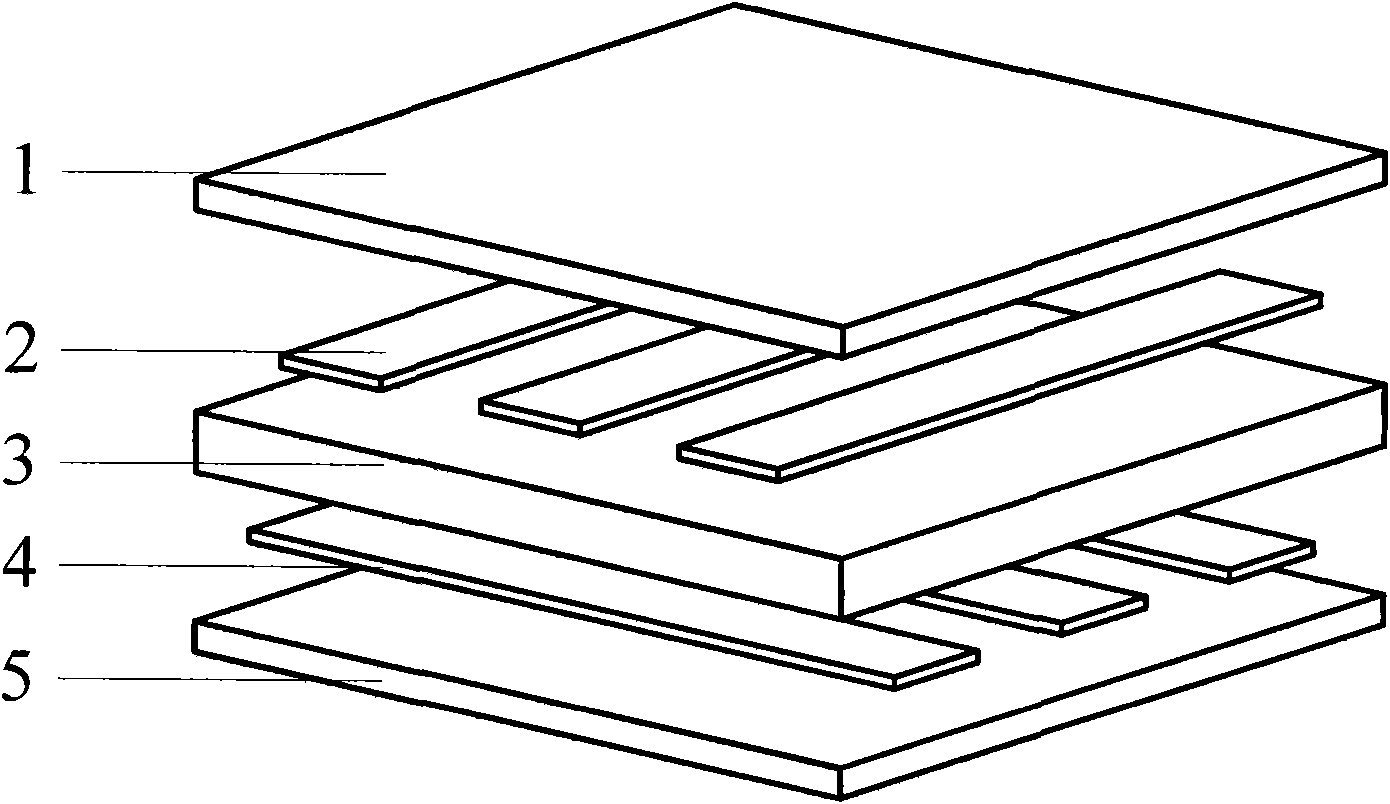Carbon nanotube / polymer composite membrane array type flexible force sensor and manufacturing method thereof
A carbon nanotube, polymer technology, applied in the field of nanotechnology and sensing, which can solve the problems of instability, irreversibility, hysteresis, and high carbon black concentration
- Summary
- Abstract
- Description
- Claims
- Application Information
AI Technical Summary
Problems solved by technology
Method used
Image
Examples
Embodiment 1
[0054] The parallel metal row electrodes 2 and parallel metal column electrodes 4 and their first insulating protective layer 1 and second insulating protective layer 5 are processed by standard flexible circuit board technology, and the surfaces of the two electrodes are plated with gold to improve the composite with carbon nanotubes / polymers For the contact characteristics of material 3, the thickness of the two electrodes can be within the range of 20-60 μm.
[0055] The multi-walled carbon nanotube A modified by hydroxyl group is used as the conductive filling material, and SBS is selected as the polymer matrix material B; the solvent C is a toluene / acetone mixed solution with a volume ratio of 1:1;
[0056] At room temperature and normal pressure, add carbon nanotube A to solvent C and ultrasonically disperse for 40 minutes. The ratio of carbon nanotube to solvent is 1mg: 40ml, and the ultrasonic power is 300W; then add a polymer 10 times the mass of carbon nanotube A For...
Embodiment 2
[0060] The difference between this embodiment and embodiment 1 is that PDMS with a smaller modulus is used as the polymer matrix material, and ethyl acetate is used as the solvent. The preparation process is the same as in Example 1.
Embodiment 3
[0062] The difference between this embodiment and Embodiments 1 and 2 is that single-armed carbon nanotubes are used as the conductive filling material, and the preparation process is the same as that of Embodiments 1 and 2.
PUM
| Property | Measurement | Unit |
|---|---|---|
| thickness | aaaaa | aaaaa |
| thickness | aaaaa | aaaaa |
Abstract
Description
Claims
Application Information
 Login to View More
Login to View More - R&D
- Intellectual Property
- Life Sciences
- Materials
- Tech Scout
- Unparalleled Data Quality
- Higher Quality Content
- 60% Fewer Hallucinations
Browse by: Latest US Patents, China's latest patents, Technical Efficacy Thesaurus, Application Domain, Technology Topic, Popular Technical Reports.
© 2025 PatSnap. All rights reserved.Legal|Privacy policy|Modern Slavery Act Transparency Statement|Sitemap|About US| Contact US: help@patsnap.com



